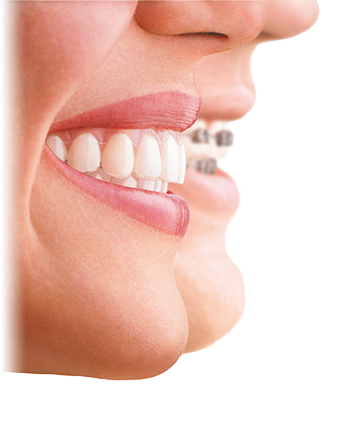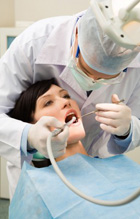 Everybody knows the saying that prevention is better than cure. Nowhere is this more true than with regards to oral hygiene. In the rest of the body illness and disease can strike no matter what the patient’s lifestyle. Even the healthiest of patients are still susceptible to most diseases. However, when it comes to dental hygiene, effective cleaning and maintenance can prevent both tooth decay and gum disease. While there are treatments available for both gum disease and tooth decay, ask anybody who has suffered from either and they will certainly tell you that a few minutes a day looking after your teeth is far more preferable to hours of painful, uncomfortable and costly repair work and treatment.
Everybody knows the saying that prevention is better than cure. Nowhere is this more true than with regards to oral hygiene. In the rest of the body illness and disease can strike no matter what the patient’s lifestyle. Even the healthiest of patients are still susceptible to most diseases. However, when it comes to dental hygiene, effective cleaning and maintenance can prevent both tooth decay and gum disease. While there are treatments available for both gum disease and tooth decay, ask anybody who has suffered from either and they will certainly tell you that a few minutes a day looking after your teeth is far more preferable to hours of painful, uncomfortable and costly repair work and treatment.
Dentists advise all patients to brush their teeth for three minutes twice a day and to floss at least once a day. It is also important to use a brush that is suitable for your teeth. A Leeds dentist will be able to advise you which kind of brush will be most effective for your teeth. Brushing and flossing are the first line of defence against all forms of decay and oral disease and their importance cannot be underestimated.
If patients do not brush and floss regularly enough then it allows plaque to build up in the mouth. Plaque is a filmy substance made up of bacteria and other debris that attacks the enamel of the teeth causing decay and cavities. If this decay is allowed to continue it will eventually reach the pulp of the teeth which will be become infected and destroyed. This will eventually lead to tooth loss and the spread of infection to other areas in the mouth, not to mention being excruciatingly painful. If the infection is allowed to enter the bloodstream in the mouth it can also lead to a more widespread infection of the body and even contribute to heart disease.
The oral cavity is one of the dirtiest places in the human body. This is an unpleasant thought but nevertheless true. Over 500 million bacteria call the moist and warm conditions in the human mouth home. Not only can this bacteria cause disease and decay, but it is also responsible for over 90 per cent of cases of bad breath. So brushing and cleaning are not only good for your health but also your social life. Bad breath is caused by decaying food matter that releases foul-smelling sulphurous compounds that can easily be removed by effective cleaning.
Good oral hygiene doesn’t involve too much of a sacrifice. Effective cleaning and regular check ups with a Leeds dentist can help to keep all forms of disease and decay at bay and could save you from a lifetime of unpleasant dental problems.





 Porcelain veneers are used for a variety of reasons in cosmetic dentistry. Most commonly they can be used to restore the structural and aesthetic integrity of a tooth that is chipped, cracked or broken. In most instances, the dentist will attempt to repair a damaged tooth with dental bonding but if the damage sustained is so severe as to pose a risk of further injury or possibly tooth loss, it will need to be protected by a veneer. Porcelain veneers are now also commonly used to improve the aesthetic appearance of badly worn, discoloured or unevenly spaced teeth.
Porcelain veneers are used for a variety of reasons in cosmetic dentistry. Most commonly they can be used to restore the structural and aesthetic integrity of a tooth that is chipped, cracked or broken. In most instances, the dentist will attempt to repair a damaged tooth with dental bonding but if the damage sustained is so severe as to pose a risk of further injury or possibly tooth loss, it will need to be protected by a veneer. Porcelain veneers are now also commonly used to improve the aesthetic appearance of badly worn, discoloured or unevenly spaced teeth. Twenty years ago, patients who required orthodontic teeth straightening were limited in their options. Metal braces were sturdy and effective but they were also uncomfortable and unseemly and if you wanted straight teeth you had little option but to have them fitted. This could be especially upsetting for patients in their teenage years as it meant having to visibly stand out form the crowd during an emotionally difficult time. Thankfully, advances in technology have meant that patients now have a multitude of options available to them, ranging from the very discreet to the very fast acting. The aesthetic impact of braces has been greatly reduced, as has the level of discomfort. Nowhere is this more true than with the Six-Month Smile treatment.
Twenty years ago, patients who required orthodontic teeth straightening were limited in their options. Metal braces were sturdy and effective but they were also uncomfortable and unseemly and if you wanted straight teeth you had little option but to have them fitted. This could be especially upsetting for patients in their teenage years as it meant having to visibly stand out form the crowd during an emotionally difficult time. Thankfully, advances in technology have meant that patients now have a multitude of options available to them, ranging from the very discreet to the very fast acting. The aesthetic impact of braces has been greatly reduced, as has the level of discomfort. Nowhere is this more true than with the Six-Month Smile treatment. Chewing gum is believed to be the world’s most common habit. Over 100,000 tonnes of it are chewed each year. While some people see chewing gum as a bad habit, and we’ve all experienced the annoyance of stepping in it at some point, there are also several major health benefits of gum chewing. It can relieve stress and tension and help with weight loss but by far and away the major benefit is for oral health.
Chewing gum is believed to be the world’s most common habit. Over 100,000 tonnes of it are chewed each year. While some people see chewing gum as a bad habit, and we’ve all experienced the annoyance of stepping in it at some point, there are also several major health benefits of gum chewing. It can relieve stress and tension and help with weight loss but by far and away the major benefit is for oral health. Having a missing tooth can be very embarrassing and the source of low self-confidence and self-esteem. It can make people reluctant to smile and avoid eye contact, two of the most important communication methods we have. However, it is not just psychological damage that is done by a missing tooth. Teeth act as rigid supports for facial muscles and a missing tooth or teeth can cause facial muscles to sag. This gives a sunken appearance that makes the patient look older.
Having a missing tooth can be very embarrassing and the source of low self-confidence and self-esteem. It can make people reluctant to smile and avoid eye contact, two of the most important communication methods we have. However, it is not just psychological damage that is done by a missing tooth. Teeth act as rigid supports for facial muscles and a missing tooth or teeth can cause facial muscles to sag. This gives a sunken appearance that makes the patient look older. Dry socket, often referred to as alveolar osteitis, is a common complication associated with tooth extraction. It occurs when the blood clot that fills the socket after extraction is removed either because it dislodges or disintegrates. The blood clot is important in aiding the healing process and if it disappears it exposes the bony socket and delays the healing.
Dry socket, often referred to as alveolar osteitis, is a common complication associated with tooth extraction. It occurs when the blood clot that fills the socket after extraction is removed either because it dislodges or disintegrates. The blood clot is important in aiding the healing process and if it disappears it exposes the bony socket and delays the healing. Gum disease, or gingivitis as it is also known, can be caused when bacteria is allowed to build up in the mouth which causes the gums to become infected. This usually manifests itself in painful, irritating and swollen gums that if left untreated it can become periodontitis and lead to wider infection and tooth loss.
Gum disease, or gingivitis as it is also known, can be caused when bacteria is allowed to build up in the mouth which causes the gums to become infected. This usually manifests itself in painful, irritating and swollen gums that if left untreated it can become periodontitis and lead to wider infection and tooth loss. When a tooth is chipped, cracked or broken, either by sporting injury or some other kind of head trauma, it can be very painful. But the pain may last longer than just the original injury and may require extensive dental treatment to prevent further damage to the tooth. The dentist will first try to fix the tooth using composite dental bonding. If the damage is too severe to fix with resin the tooth may need a crown to protect it and restore its structural integrity.
When a tooth is chipped, cracked or broken, either by sporting injury or some other kind of head trauma, it can be very painful. But the pain may last longer than just the original injury and may require extensive dental treatment to prevent further damage to the tooth. The dentist will first try to fix the tooth using composite dental bonding. If the damage is too severe to fix with resin the tooth may need a crown to protect it and restore its structural integrity. Sleep apnea is a sleeping disorder that causes a person to actually stop breathing during sleep. The interruptions to breathing can happen up to several hundred times a night. Incredibly, people who suffer from sleep apnea very rarely know that they have the condition, with as many as 90 per cent being completely unaware. It is only when they have been told by a partner of family member that they become aware of the condition.
Sleep apnea is a sleeping disorder that causes a person to actually stop breathing during sleep. The interruptions to breathing can happen up to several hundred times a night. Incredibly, people who suffer from sleep apnea very rarely know that they have the condition, with as many as 90 per cent being completely unaware. It is only when they have been told by a partner of family member that they become aware of the condition. Thumb sucking in infants is a natural reflex action and can be very comforting for them. It is also a very common habit with recent studies estimating that between 75 and 95 per cent of infants suck their thumbs at some stage. This in itself is no cause for concern. This very comforting reflex is important for making children feel comfortable, many children suck their thumbs as they fall asleep, and nearly all children will stop sucking it on their own between the ages of two and four. It is simply a case in most instances of outgrowing the habit.
Thumb sucking in infants is a natural reflex action and can be very comforting for them. It is also a very common habit with recent studies estimating that between 75 and 95 per cent of infants suck their thumbs at some stage. This in itself is no cause for concern. This very comforting reflex is important for making children feel comfortable, many children suck their thumbs as they fall asleep, and nearly all children will stop sucking it on their own between the ages of two and four. It is simply a case in most instances of outgrowing the habit.

